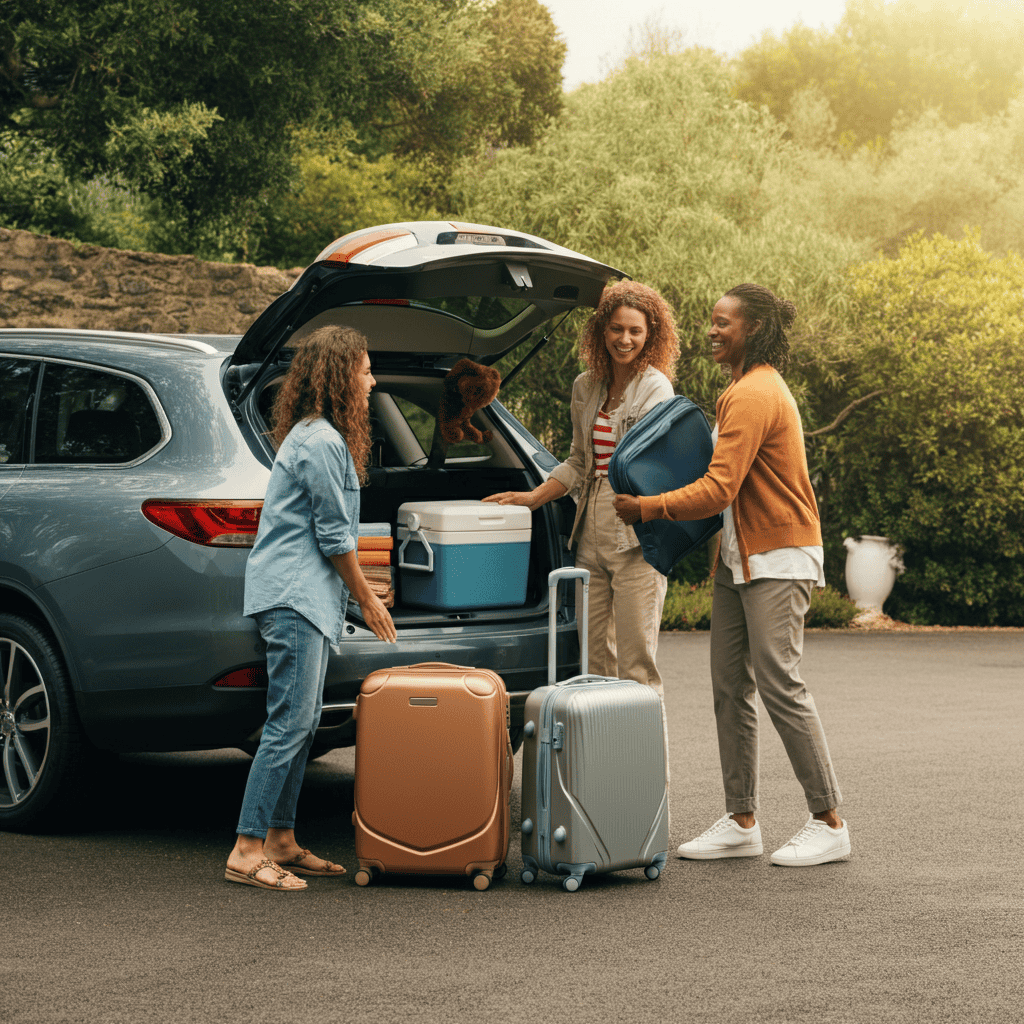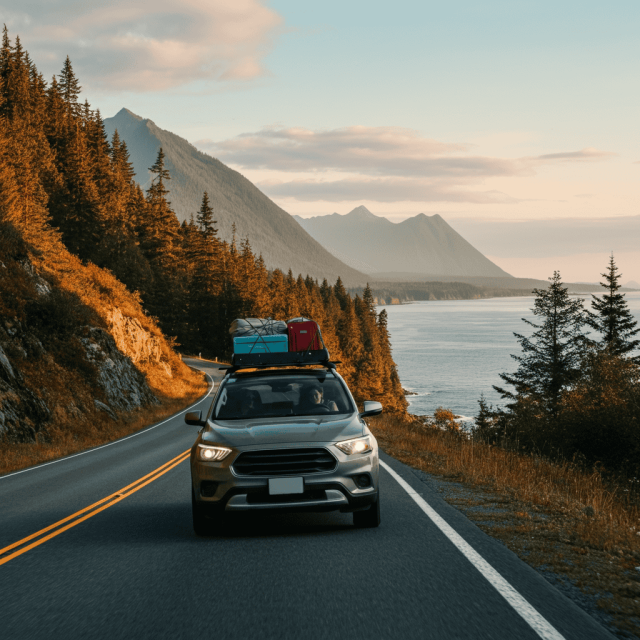Embarking on a family road trip offers the perfect blend of adventure, quality time, and flexibility. Unlike traditional vacations that follow a fixed schedule, a road trip allows you to chart your own course, discover hidden gems, and create lifelong memories with your loved ones. From winding coastal highways to majestic national parks and charming small towns, the open road is your oyster. But to ensure smooth travels and happy travelers, thoughtful planning is essential. In this guide, we cover everything you need to know—from choosing the right route and setting a realistic budget to packing essentials, keeping kids entertained, ensuring car safety, and capturing those special moments. Ready to hit the highway? Let’s dive into the ultimate family road trip roadmap.
Why Choose a Family Road Trip?
Road trips offer unmatched flexibility and freedom. You decide where to go, how long to stay, and which detours to take. This adaptability lets families explore at their own pace, discovering scenic overlooks, roadside attractions, and local eateries along the way. Road travel also fosters togetherness—sharing playlists, playing car games, and swapping stories turns travel time into quality time. Plus, a well-planned road trip can be more budget-friendly than flying, with control over lodging and meal choices. Whether you crave outdoor adventures, cultural stops, or simply the joy of rolling down the windows and feeling the breeze, a family road trip checks all the boxes.
1. Selecting Your Ideal Route
Choosing the right route sets the tone for your entire journey. Start by listing must-see destinations—national parks, landmarks, theme parks, or historical sites—and map out a loop or one-way path that connects them logically. Consider scenic byways like Route 66, the Pacific Coast Highway, or the Blue Ridge Parkway for breathtaking views and photo ops. Balance driving days with rest days: aim for 4–6 hours of driving max, allowing time for sightseeing and spontaneous stops. Use mapping tools to estimate driving times, factor in rest breaks every 2–3 hours, and build in buffer days for unexpected detours or weather delays. Share the itinerary with everyone so kids can look forward to specific highlights and contribute ideas along the way.
2. Budgeting and Planning
A well-defined budget keeps stress low and fun high. Trip planning should start with tallying anticipated expenses in categories like fuel, accommodations, food, activities, and incidentals. To estimate fuel costs, calculate total miles, average miles per gallon, and local gas prices. For lodging, mix budget-friendly motels, family-oriented campgrounds, vacation rentals, and splurge nights at unique lodgings like cabins or glamping sites. Save on meals by packing breakfasts, snacks, and picnic supplies, and balance dining out with cooking at campsites or grocery-store deli picks. Allocate a daily “fun fund” for entrance fees, tours, or souvenirs. Keep digital spreadsheets or apps updated in real time to track spending and adjust plans as needed. Booking accommodations early can secure better rates, but leaving one or two nights open-ended adds spontaneity to your travels.
3. Packing Essentials for the Whole Family

Efficient packing prevents overstuffed trunks and forgotten necessities. Start with a master checklist that includes clothing layers, because temperatures can vary widely, especially in mountains or deserts. Pack quick-dry shirts, comfortable pants or leggings, sturdy walking shoes, and lightweight jackets. Don’t forget hats, sunglasses, and reusable water bottles. For overnight stays, include toiletries, towels, chargers, first-aid supplies, and any prescription medications. Organize items in labeled bins or packing cubes for easy access. Keep a roadside emergency kit in the car with jumper cables, tire gauge, flashlight, reflective triangles, and basic tools. For little ones, bring car seat adapters or boosters, travel pillows, blankets, and a stash of favorite snacks. Finally, designate an “essentials bag” with documents, cash, cards, maps, and reservation confirmations within arm’s reach.
4. Keeping Everyone Entertained
Long drives can test patience, so arm yourself with a variety of entertainment options. Classic road-trip games like “I Spy,” license-plate bingo, and storytelling chains spark creativity and laughter. Download audiobooks or family-friendly podcasts to provide hours of immersive listening. Create a road-trip playlist featuring each family member’s favorite tunes. Pack drawing pads, colored pencils, and travel-friendly puzzles for off-screen breaks. Portable gaming devices or tablets loaded with downloaded movies are great for limits, but balance screen time with interactive activities. Plan scenic stops every 90–120 minutes to stretch legs, explore short trails, or check out roadside attractions. Encourage kids to keep a travel journal or photo scavenger hunt to engage them in documenting the journey.
5. Ensuring Safety and Vehicle Prep
Prioritize safety by scheduling a full vehicle inspection before departure. Have a trusted mechanic check brakes, fluid levels, belts, hoses, battery, tires, and windshield wipers. Ensure your spare tire is in good condition and that you have a functional jack and lug wrench. Pack an emergency kit with bandages, antiseptic wipes, pain relievers, blankets, a multi-tool, and flashlights. Keep roadside assistance contact info and your auto insurance card handy. Teach kids basic safety rules, like remaining buckled up and avoiding sudden movements while the car is in motion. Download relevant apps for navigation, weather updates, and emergency services. Finally, plan driving shifts if multiple adults are available, and avoid driving during peak fatigue hours by sharing responsibilities and taking regular breaks.
6. Dining Tips and Food on the Go
Eating well on the road keeps morale high and energy levels stable. Start days with a hearty breakfast—oatmeal packets, yogurt cups, or homemade muffins. Pack a cooler with insulated ice packs for perishable snacks: cheese sticks, cut fruits, hard-boiled eggs, and pre-made sandwiches. Reusable containers minimize waste and reduce costs. Research local farmers’ markets or roadside farm stands for fresh produce and regional specialties. Balance grocery stops with occasional restaurant treats to experience local cuisine without overspending. Keep refillable water bottles and a filtered water pitcher on board to stay hydrated. For families camping or staying in vacation rentals, plan simple dinners like grilled kabobs, foil-packet meals, or pasta dishes. Don’t forget treats like popcorn or trail mix for movie nights or evening campfire gatherings.
7. Choosing Family-Friendly Accommodations
Selecting the right lodging is key to everyone’s comfort and rest. When booking hotels, look for family suites or rooms with two beds and a small kitchenette. Search for complimentary breakfast, pools, and laundry facilities to streamline mornings and reduce packing. Campgrounds offer an affordable, immersive experience, but reserve spots early and check for family-oriented amenities like playgrounds and community fire pits. Vacation rentals provide extra space, privacy, and the ability to cook meals—ideal for longer stays. Read reviews from other families focusing on location, noise levels, and safety. Consider “glamping” sites for a memorable mix of comfort and nature. If splitting time between different regions, balance longer hotel stays with one- or two-night pit stops for a change of scenery without overpacking.
8. Capturing Memories
A road trip is as much about the journey as the destination, so document every moment. Assign a family photographer for each leg, whether it’s a teen with a smartphone or a parent with a DSLR. Encourage kids to journal daily highlights, sketch roadside views, or collect postcards. Use time-lapse video to capture changing landscapes, or record audio clips of birdsong, highways, or family laughter. At the end of each day, create a digital scrapbook slide or social media post to share with relatives. Bring extra batteries, memory cards, and portable chargers to avoid missing key shots. For a tactile keepsake, assemble printed photos and mementos into a road-trip scrapbook once you return home.
9. Staying Flexible and Stress-Free
While planning is crucial, maintaining flexibility prevents frustration. Build buffer days into your itinerary for unexpected discoveries, bad weather, or rest. Embrace detours that look intriguing—even a quick stop at a quirky roadside museum can become a family highlight. Set realistic daily driving goals based on your family’s patience and interests. Communicate openly about needs and feelings: check in at mealtimes and rest stops to gauge energy levels. Have backup plans for rainy days, like indoor attractions or movie time. Avoid overscheduling; sometimes the best memories come from downtime at a lakeside picnic or impromptu roadside lookout. Remember, the journey itself is the adventure.
Conclusion
A well-executed family road trip combines careful planning with a spirit of adventure. By selecting an engaging route, managing your budget, packing smart, and ensuring safety, you set the stage for a stress-free journey. Keep everyone entertained with games, audiobooks, and scenic stops, and cherish the moments by capturing photos and journaling. Embrace flexibility, and don’t be afraid to take spontaneous detours that spark joy. Whether it’s the thrill of discovering a hidden waterfall, the laughter shared over a roadside picnic, or the quiet beauty of a sunset viewed from your car window, family road trips create unforgettable experiences that last a lifetime. Now start your engines and hit the highway—your ultimate family adventure awaits!
Learn more about: How to Air Travel with a Dog: The Complete Guide














